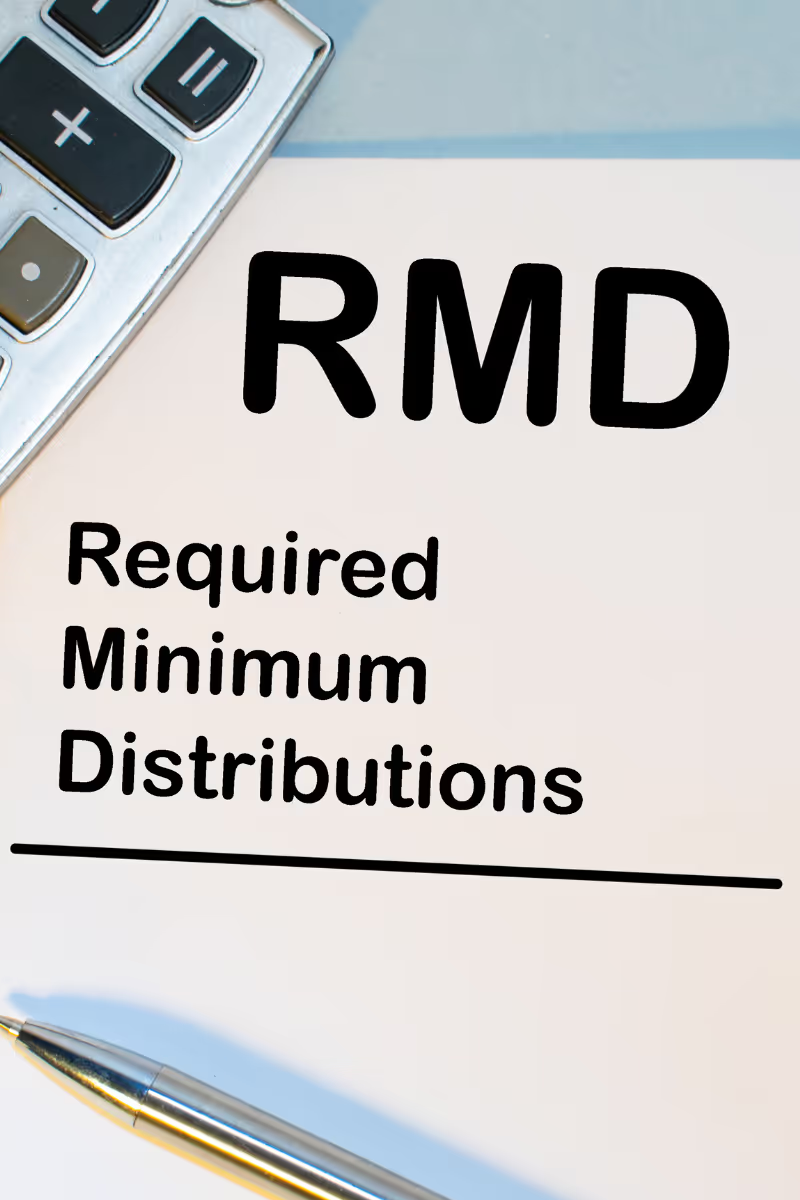As you approach your golden years, one of the key tasks is making sure your retirement savings are working as efficiently as possible to support your future. It’s not just about saving—it's about managing your accounts in a way that helps maximize financial stability and minimize taxes.
🔍 Did You Know? If you miss your RMD, you could face a 25% IRS penalty—but it may be reduced to 10% if corrected in time. In today’s blog, we’ll walk you through the essentials of Required Minimum Distributions (RMDs), dive into some legislative changes, and explore strategies to help you make the most of your distributions.

Required Minimum Distributions (RMDs) are mandatory, minimum withdrawals that individuals must take annually from their tax-deferred retirement accounts, such as traditional IRAs and 401(k) plans, starting at a specific age. The purpose of RMDs is to ensure that individuals do not defer taxation on retirement savings indefinitely. The amount of each RMD is calculated based on the account balance at the end of the previous year divided by a life expectancy factor provided by the IRS. Failure to withdraw the required amount can result in significant penalties.
The SECURE 2.0 Act, enacted in December 2022, introduced several changes to RMD rules that will continue to affect retirees through 2025 and beyond:
The calculation of RMDs involves dividing the prior year's December 31 account balance by a life expectancy factor provided in IRS tables. The Uniform Lifetime Table is the most commonly used, though exceptions exist for account holders with a spouse over 10 years younger.
Here is a simplified version of the Uniform Lifetime Table, used by most account holders to calculate Required Minimum Distributions (RMDs). The table provides a life expectancy factor based on your age, which you divide into your retirement account balance to determine your RMD.

RMD = Account Balance ÷ Life Expectancy Factor
RMD = $1,000,000 ÷ 26.5 ≈ $37,735
This means you would be required to withdraw approximately $37,735 in 2025 and report it as taxable income.
For those with special circumstances (e.g., a spouse over 10 years younger), other tables, such as the Joint and Last Survivor Table, may apply. Always consult the latest IRS documentation for accurate figures.

Effective RMD management can help mitigate tax liabilities and enhance the longevity of retirement assets. Consider the following strategies:

Tax diversification is an often overlooked strategy for managing retirement income. Having a variety of account types, including traditional IRAs, Roth IRAs, taxable brokerage accounts, and other tax-deferred vehicles, may help provide flexibility when it comes time to take RMDs. By maintaining a mix of tax-deferred and tax-free accounts, you can adjust the sources of income you draw from, helping to minimize the impact of RMDs on your overall tax liability.
As retirement account balances grow, RMDs become more significant. Many consider how RMDs could affect their estate planning goals. Since RMDs are taxable income, large distributions can potentially increase an individual’s taxable estate, affecting their estate tax exposure.
One strategy to help mitigate this effect is to gift portions of retirement assets to heirs during retirement, though this should be weighed carefully against RMD requirements. Additionally, naming beneficiaries wisely and considering charitable giving strategies like Qualified Charitable Distributions (QCDs) can align RMD management with estate planning objectives.
Tax laws, retirement planning strategies, and personal financial situations can evolve, making it essential to regularly review your RMD strategy. This review should be done annually, at a minimum, to help ensure that your approach remains aligned with your overall retirement goals. During the review, consider factors such as changes in tax rates, the performance of your retirement accounts, and any adjustments to your estate or charitable giving strategies. Staying proactive in your RMD planning can help ensure that your strategy remains effective and that you minimize any unforeseen tax consequences.
Navigating RMDs effectively is a critical component of retirement planning. Considering strategies such as Roth IRA conversions, QCDs, and tax diversification may help individuals minimize tax liabilities and extend the longevity of their retirement assets. Regular reviews and strategic planning can also help ensure that RMDs are managed to complement broader financial goals, including estate planning, Social Security, and Medicare considerations.
At NJM Wealth Preservation Strategies, we assist individuals in understanding their retirement options and taking the necessary steps to help optimize their RMD strategy.
Contact us today to schedule a complimentary consultation.
Yes, as long as you meet the eligibility requirements. The SECURE Act removed the age limit for traditional IRA contributions, allowing individuals with earned income to continue making contributions even after reaching RMD age. However, 401(k) contributions depend on your employment status—if you are still working and your employer allows, you may be able to continue contributing to your 401(k) while also taking RMDs from other accounts.
Yes, but the rules depend on your relationship to the original account holder. Under the SECURE Act, most non-spouse beneficiaries must withdraw the entire balance within 10 years of inheriting the account. However, spouses and certain eligible beneficiaries, such as minor children and individuals with disabilities, may have different distribution options. If you inherit a Roth IRA, RMDs may still apply, but the distributions are typically tax-free.
Yes, if the annuity is held within a tax-deferred retirement account, it is subject to RMD rules. However, if the annuity has already been annuitized (meaning it’s paying out a fixed income stream), the IRS considers those payments to help satisfy RMD requirements. Non-qualified annuities (held outside of retirement accounts) do not have RMDs but may be subject to other tax rules.
No, RMDs cannot be rolled over into another tax-advantaged retirement account. Once you take an RMD, it is considered taxable income and must be withdrawn. However, if you do not need the funds for immediate expenses, you can reinvest the distribution in a taxable brokerage account or other investment vehicle.
While RMDs are subject to federal income tax, their treatment at the state level varies. Some states, such as Florida and Texas, do not tax retirement income at all. Others offer partial exemptions or tax only certain types of distributions. Understanding your state’s tax laws can help you plan for the most tax-efficient withdrawal strategy. Consulting with a financial professional can provide clarity on how state-specific regulations may impact your RMDs.
Disclaimer:
This content is for informational purposes only and should not be considered financial, tax, or legal advice. Always consult a qualified financial advisor or tax professional for personalized guidance. NJM Wealth Preservation Strategies does not provide personalized investment advice or guarantee future results.